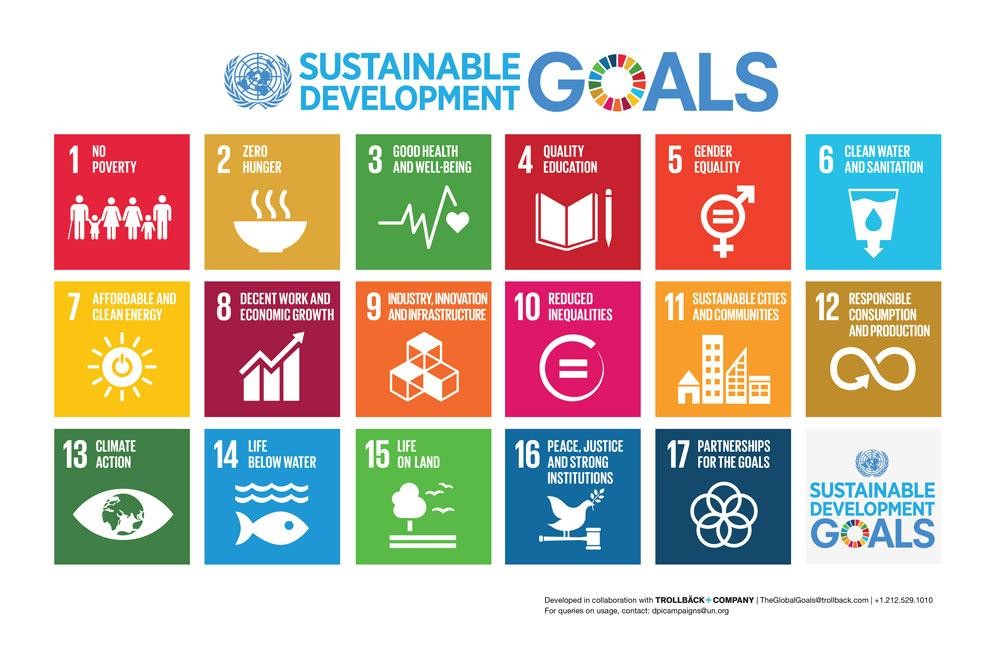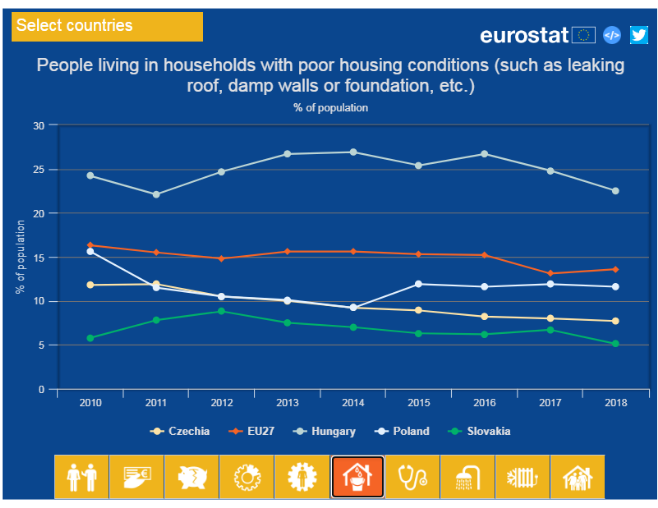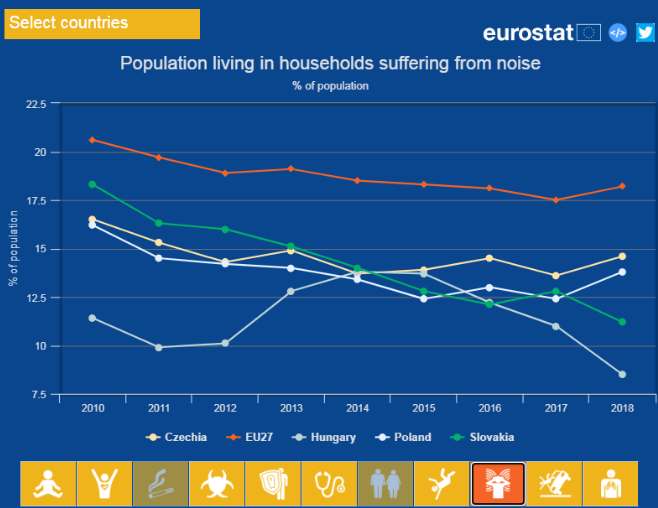

At the first look, you could have asked yourself: What do social entrepreneurship and sustainable development goals have in common? Before we dive into statistical details let’s have a look at the definition of both terms.
Sustainable development goals, also known as SDG’s, were adopted in September 2015 by 195 countries as an agenda to be fulfilled by the end of 2030. There are a total of 17 SDGs, each focusing on a different social issue. The SDGs are building on the principle of “leaving no one behind” in order to achieve sustainable development for all. Naturally, among the signatory countries, were also all of the SIN project countries (Slovakia, Czech Republic and Hungary). You can find the list of SDGs here and other SDG important documents here.

We already elaborated more on social entrepreneurship and social enterprise in our previous article. To refresh our memory, let’s have a look at a European Union definition of social enterprise: a social enterprise can be described as “an operator in the social economy whose main objective is to have a social impact rather than make a profit for their owners or shareholders.“ Therefore, we find social entrepreneurship to be related with terms like disabled people, societal challenges or environmental issues.
Taking into consideration this fact, we see now how the SDGs relate to social entrepreneurship as such. The SDGs include the most important societal challenges, thus, representing a wide set of business opportunities for social entrepreneurs.
To discover some of the business opportunities, we decided to shed light on current development of chosen SDGs in the project countries. We will have a look at project country results, namely Slovakia, Czech Republic and Hungary. Here is a brief sum up of the selected SDGs’ statistics we prepared for you.

This goal is defined as ending poverty including the accessibility to the healthcare system, security and education. Around 10% of the worldwide population still live in poverty. It may seem to be a small percentage, however, this corresponds to around 700 million people. This number will unfortunately rise by 70 million due to the Covid-19 pandemic.
European Union (EU) gathers its own SDGs’ statistical data. You can simply choose a country you are interested in and see how it performs under a selected SDG. We selected some interesting figures for you. Let’s see how Hungary, Czech Republic and Slovakia perform in comparison to the EU average.
In general, the percentage of people at risk of poverty is not high in Europe, however, further steps to lower this number can be taken. This can be mitigated through inclusion of disabled and disadvantaged people or people with low income. The EU average of people at risk of poverty varies between 22% and 25% of the population, with the highest peak occurring in 2012 when reaching 24,9% (around 125 million Europeans).
The graph shows that Hungary was for a long time struggling with a high number of people at risk of poverty reaching almost 35% at its peak. This fact is very intriguing when considering the development of other 2004 EU enlargement countries. On the other hand, a constantly decreasing percentage of people at risk can be observed in Czechia and Slovakia, maintaining itself under the EU’s average. We can be proud of this result, which cannot be said about underperforming countries such as Greece, Italy or Spain. Nonetheless, we should not stop this fight against poverty.

An interesting indicator within SDG 1 is also the percentage of people living in households with low work intensity which comprises adults working 20% or less of their total work potential during the past year. This indicator shows us additional work potential that could be reached by social entrepreneurs and at the same time enabling inclusiveness of risk and disadvantaged groups.
A good example of including disadvantaged people into social business is a concept called sobi.eco, which focuses on environmentally friendly production. If you are interested in sobi.eco’s business model, have a look at the interview with its founder Tomáš Horváth.
Bettering the living conditions can present other business opportunities especially in Hungary where almost a quarter of the population lives in poor housing conditions. The rest of the V4 countries are performing better compared to Hungary and to the western countries such as Germany, Austria or France.

If you feel under constant pressure of noise, you are not alone. On average, 18% of the EU population is suffering from noise. We presume that we will be encountering this problem more often given the growing population and urbanisation. There is a major potential for noise cancelling solutions in more developed countries such as Germany or Netherlands. On the other hand, the project countries are below average, thus offering a quieter living environment.


An outstanding problem worldwide is air pollution. Fine and coarse particulates whose diameters are less than 10 micrometres, can be carried deep into the lungs where they can cause inflammation and exacerbate the condition of people suffering from heart and lung diseases. The number of these small particles defines the level of air pollution. Due to the production level and industrialisation level, the air pollution is above the EU’s average jeopardizing general health in project countries. This issue offers space to multiple innovations in the environment as well as in the health sector.
Education is a crucial part affecting economic growth and overall well-being. The basic education is nowadays delivered quite well, however the percentage of adults participating in learning is very low. Slovakia is in this case especially underperforming. Adult education is a necessary tool to overcome the 4th industrial revolution which will impact mostly low-qualified jobs.

Up to 800 million jobs in 42 countries solely will be displaced according to the McKinsey report from 2018. According to the World Economic Forum, 54% of the population will need to reskill or upskill themselves. So, don’t overlook this opportunity. You can be the one to help many people to get a new skill set and a job.

Renewable energy is a frequently discussed topic. There are multiple types of renewable energy, but energy production by itself is not the only problem related to clean energy. Another problem is how energy can be distributed to those who will be using it.
As we can see from figure 7, the project countries are still below the average with respect to the share of renewable energy in gross final energy consumption ranging from 10% to 13%. There are huge differences among single EU countries. Whereas the lowest percentage of renewable energy is used in the Netherlands, followed by Luxemburg and Belgium, the highest share of renewable energy can be observed in Sweden (54% of total energy consumption). If you like nature and environment, this is definitely an opportunity to act.
Besides renewable energy, one can easily help the environment by recycling. If you still haven’t done it in your household or workplace, it may be the right time for it. Even though the amount of recycled waste increases constantly, there is no doubt, it can be done better and smarter. You can be creative and target two SDGs by employing disadvantaged groups and focusing on the environment. If you are curious about how an environment-oriented business model could work, we invite you to watch our discussion with Martin Vaško on social entrepreneurship or read a brief summary.
There are many other societal challenges connected to SDGs. The SDGs are closely observed and there are many statistical reports on them. Whether you are preparing your business plan or you are simply curious, you can visit pages like World Economic Forum or Eurostat to get more insight on social issues.
